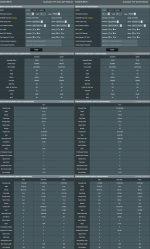mikefrommanchester
Occasional Visitor
Hi - I have upgraded my RT-AC86U to 386.2_4 firmware with Cake-qos built in and activated it.
Is there any impact or do I need to do anything with regards to Cake-qos that I had installed via the Github onto USB using the following instructions:
GitHub - ttgapers/cakeqos-merlin: Custom add-on for supported Asus routers with Merlin firmware that introduces CAKE QoS as an alternative to Traditional/Adaptive/FreshJR implementations
Or does the new firmware with Cake-qos just overwrite this package...
I did stop it before I turned on Cake from the Merlin firmware and it seems to be working fine.
Just wanted to check I haven't got some conflict - that is going mess up something...
Thanks for any help
Is there any impact or do I need to do anything with regards to Cake-qos that I had installed via the Github onto USB using the following instructions:
GitHub - ttgapers/cakeqos-merlin: Custom add-on for supported Asus routers with Merlin firmware that introduces CAKE QoS as an alternative to Traditional/Adaptive/FreshJR implementations
Or does the new firmware with Cake-qos just overwrite this package...
I did stop it before I turned on Cake from the Merlin firmware and it seems to be working fine.
Just wanted to check I haven't got some conflict - that is going mess up something...
Thanks for any help


